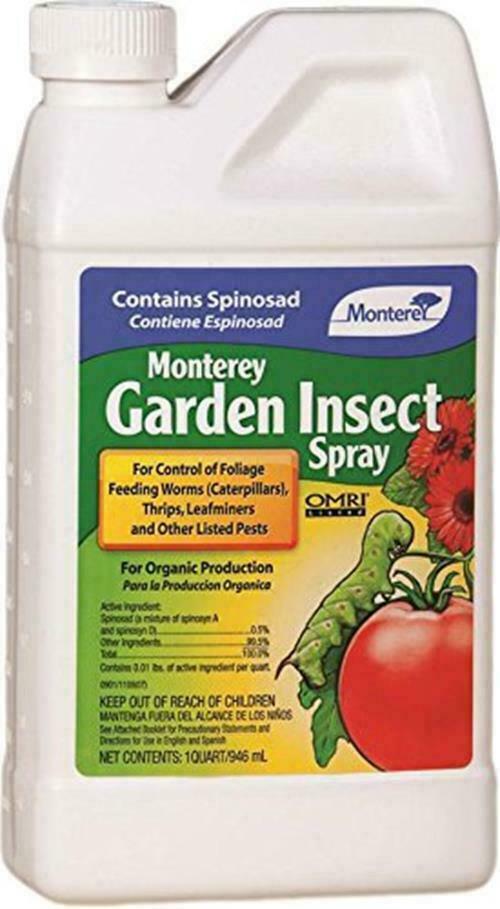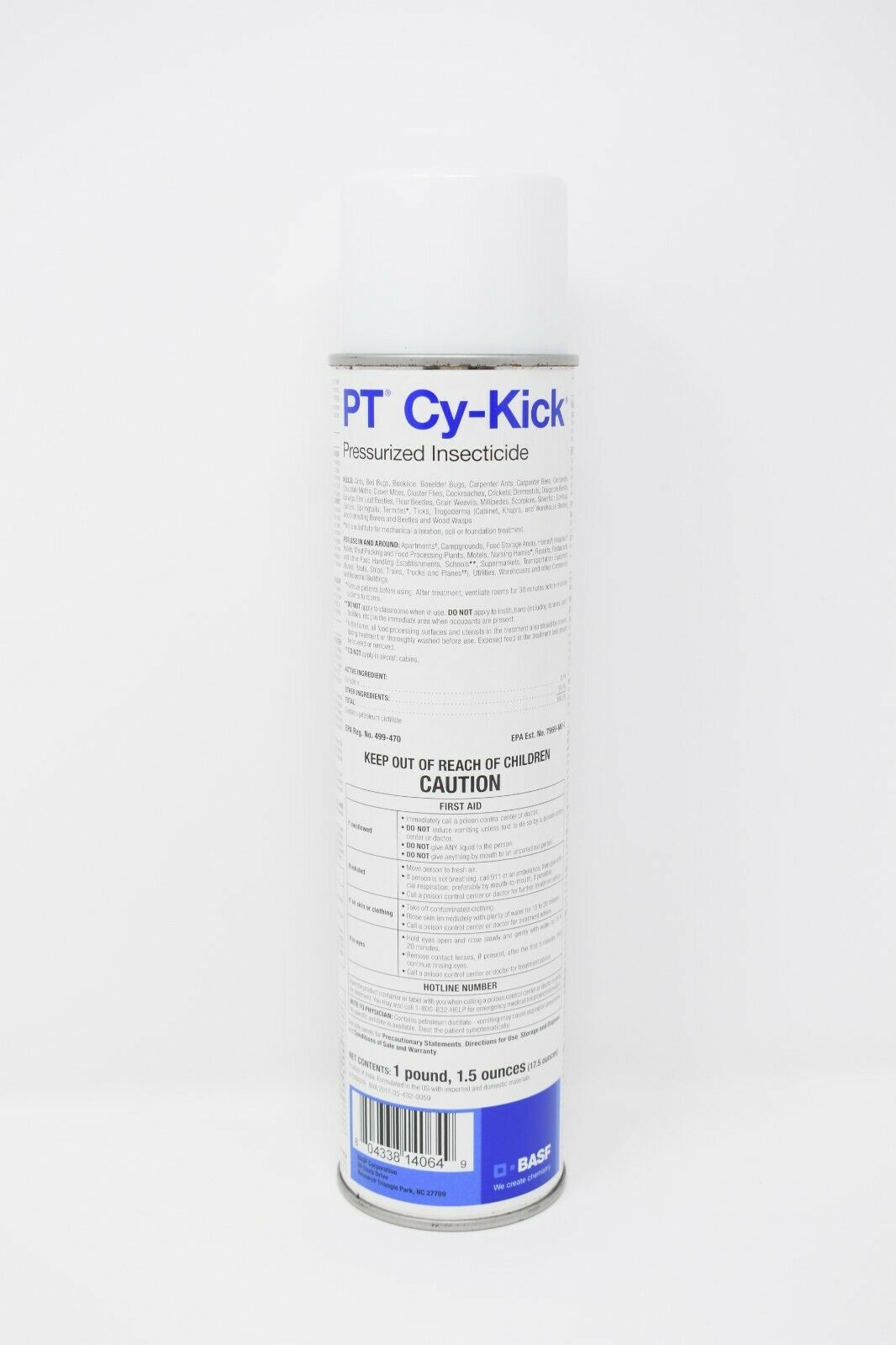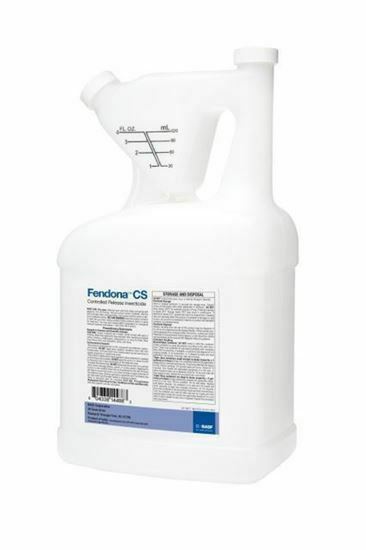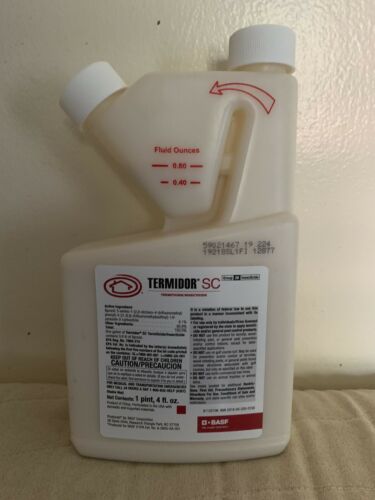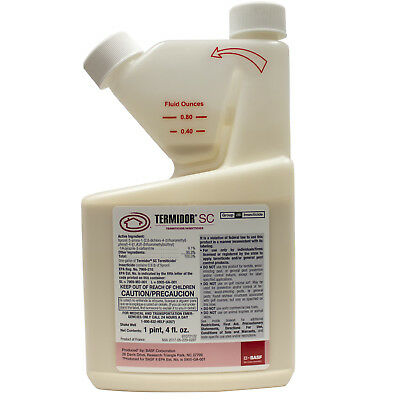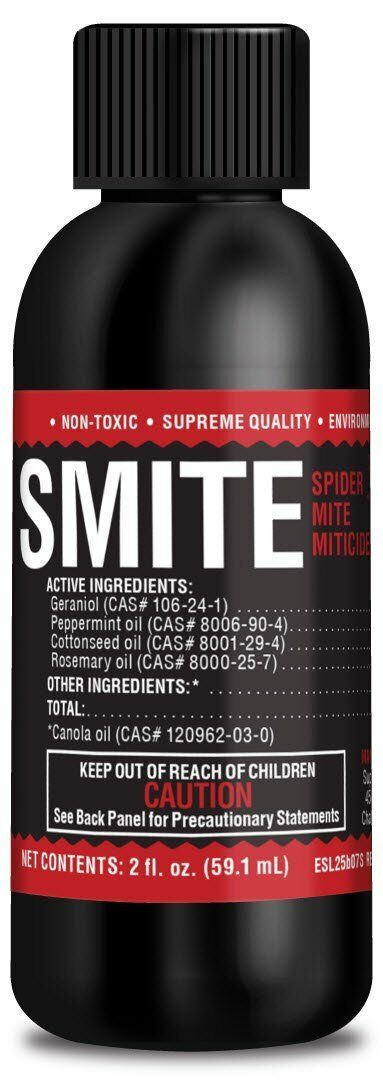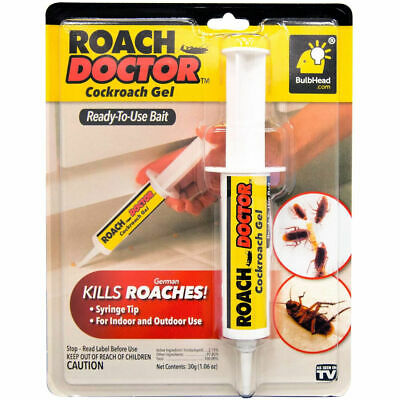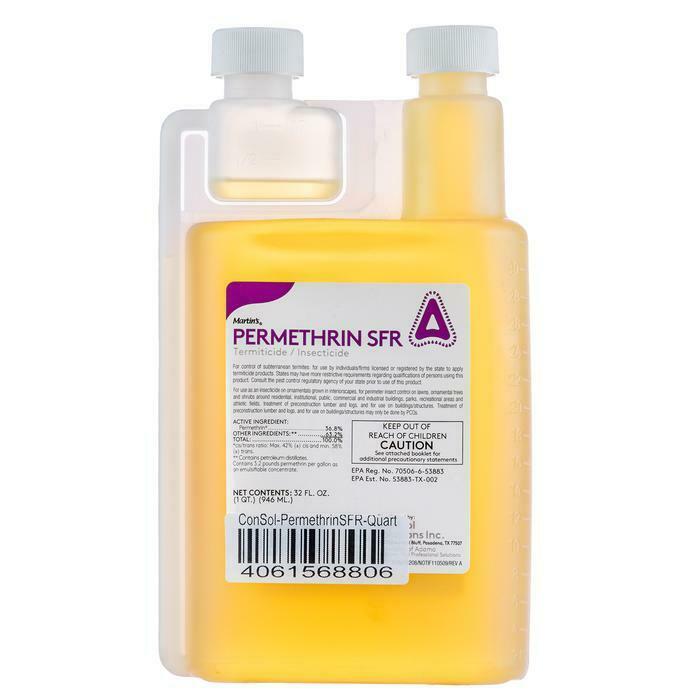-40%
Monterey Garden Insect Spray 1 pint 16oz
$ 13.68
- Description
- Size Guide
Description
Monterey Garden Insect Spraycontains Spinosad, which is derived through fermentation of a naturally-occurring soil bacterium. Spinosad controls caterpillars, thrips, codling moth, leafminers, borers, fruit flies, fire ants, and more! Spinosad works on the insect's nervous system, causing paralysis and then death in 1-2 days. Since the insects are paralyzed, they may stay on the plants and be mistaken for live insects; always check for Spinosad's effect 2-3 days after spraying to evaluate control in the insect population.
OMRI
listed Monterey Garden Insect Spray is safe to use with the following beneficial insects: minute pirate bug, ladybird beetles (ladybugs), green lacewing, and mite predators. However, it is toxic to bees; for this reason, applications should be made in the late evening and on plants that are not blooming, pollen-shedding, or nectar-producing.
This Product Controls These Pests or Diseases:
This product works as a biological control for the following: Ants (Mult), Armyworm (Pseudaletia unipuncta), Asparagus Beetles (Crioceris asparagi (common); Crioceris duodecimpunctata (spotted)), Bean Leaf Beetle (Cerotoma trifurcata), Bean Thrips (Caliothrips fasciatus), Beet Armyworm (Spodoptera exigua (Hubner)), Black Cutworm (Agrotis ipsilon (Hufnagel)), Bollworm (Helicoverpa zea), Broccoli Worms; Imported Cabbage Worm (Pieris rapae), Cabbage Butterfly (Pieris rapae), Cabbage Looper (Trichoplusia ni), Cabbage Moth, Cabbage Army Moth (Mamestra brassicae), Cabbage Worm (Pieris rapae), Celery Worm (aka Parsley Worm, Parsnip Butterfly, Eastern Black Swallowtail, American Swallowtail) (Papilio polyxenes), Cherry Fruit Fly (aka Western Cherry Fruit Fly) (Rhagoletis indifferens Curran), Cherry Fruit Worm (Grapholita pacakardi), Codling Moth (Cydia pomonella), Colorado Potato Beetle (Leptinotarsa decemlineata), Corn Borer (aka European Corn Borer) (Ostrinia nubilalis), Corn Borer (aka Southwestern Corn Borer) (Diatraea grandiosella), Corn Earworm (Helicoverpa zea), Cutworm (Agrotis, Amathes, Peridroma, Prodenia spp), Diamondback Moth (Plutella xylostella), European Apple Sawfly (Hoplocampa testudinea), European Corn Borer (aka Corn Borer) (Ostrinia nubilalis), Fall Armyworm (Spodoptera frugiperda), Fall Canker Worms, Inchworms (Alsophila pometaria), Fall Webworm (hyphantria cunea), Fire Ant (Solenopsis invicta), Flea Beetle (Chaetocnema confines), Fruit Flys (Drasophylla), Fruit Worm (mult), Grape Leaf Folder (Desmia funeralis), Grape Leafroller (Erythroneura variabilis), Grasshopper (Gryllus), Gypsy moth (Lymantria dispar), Hornworm (Manduca sp), Inch worm (Mult), Indian Meal Moth (Plodia interpunctella), Leafminer (Phyllocnistis sp), Leafroller (Archips argyrospila), Leafroller (Platynota stultana), Leafroller (Choristoneura rosaceana), Leafroller (Pandemis pyrusana), Leafroller (Argyrotaenia franciscana), Leafroller (Epiphyas postvittana), Lesser Peach Tree Borer (Synanthedon pictipes), Lucerne Moth (Nomophila noctuella), Midges (Dicrotendipes modestus), Midges (Chironomus decorus), Midges (Chironomus plumosus), Midges (Orthocladius mallochi), Mites (Tetranychus sp), Omnivorous leafroller (Platynota stultana), Orange tortrix (Argyrotaenia (=citrana) franciscana), Orangeworm (Amyelois transitella), Oriental Fruit Moth (Grapholitha molesta), Parsleyworm (Papilio polyxenes asterius), Peach Twig Borer (Anarsia lineatella Zeller), Pink Bollworm (Pectinophora gossypiella), Red-banded Leafroller (Argyrotaenia velutinana), Sod Webworm (Mult), Sperry's Lawn Moth (Crambus sperryellus), Spider Mite (Mult), Spinach Leafminer (Pegomya hyoscyami), Spring Canker Worms, Inchworms (Paleacrita vernata), Squash Vine Borer (Melitta curcurbitae), Tent Caterpillar (Malacosoma americanum), Thrips (Franklinothrips sp), Tobacco budworm (Heliothis virescens), Tomato Fruitworm (Helicoverpa (Heliothis) zea), Tomato Hornworm (Manduca quinquemaculata), Tomato Pinworm (Keiferia lycopersicella), True Armyworm (Pseudaletia unipuncta), Two-Spotted Spider Mite (Tetranychus urticae), Walnut Caterpillar (Datana integerrima), Walnut Husk Fly (Rhagoletis completa), Webworm (Hyphantria cunea), Western Lawn Moth (Tehama bonifatella)
Directions for use:
For the Garden:
Use any type of sprayer. Mix 2 oz. (4 Tbsp.) per gallon of water. Mix thoroughly and apply uniformly to both upper and lower surfaces of plant foliage. Mix only enough for a single treatment. Use no more than 3 gallons of spray for 1,000 square feet. Do not use kitchen utensils for measuring. See label below for number of applications per season, frequency, and interval to harvest.
Individual Fire Ant Mounds:
Mix the amount of Monterey Garden Insect Spray recommended per gallon of spray (2 oz or 4 T) and use sprinkler can or similar device to apply the diluted spray as a mound drench, using 1 – 2 gallons per mound. Do not use pressurized sprays. Apply about 10% of the volume around the perimeter of the mound and the remainder directly to the mound. Do not disturb fire ant mound prior to application. If possible, apply following recent rainfall. For best results, apply when weather is cool, 65 to 85ºF, or in early morning or evening. One quart treats 8-16 mounds; 1 gallon treats 32-64 mounds.
Environment: Outdoors, Crops, Orchards & Vineyards, Nursery, Greenhouse, Grow Room, Hydroponics, Aquaponics, Container Plants
Storage:
Store in original container. Store in a cool, dry place.
